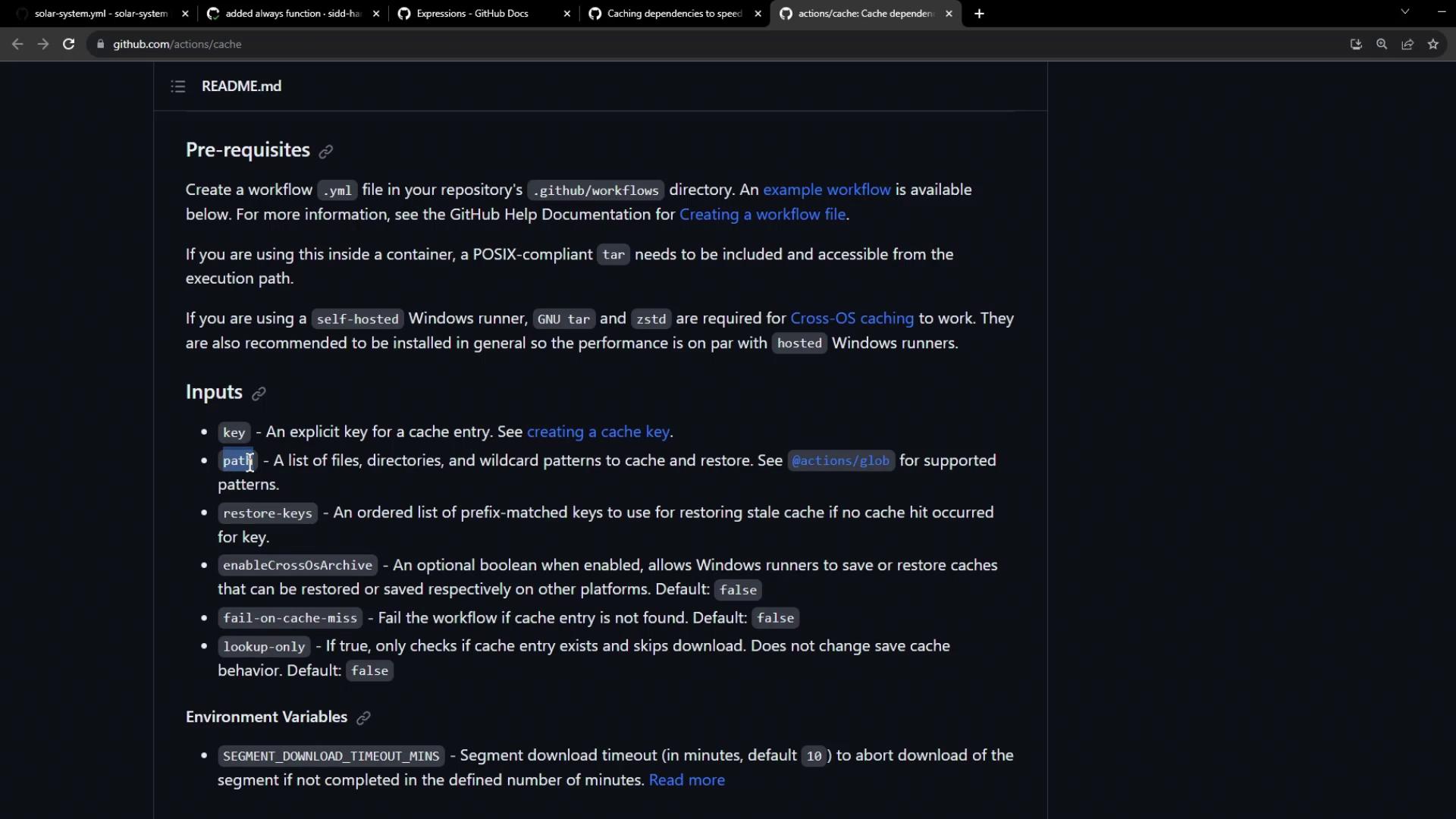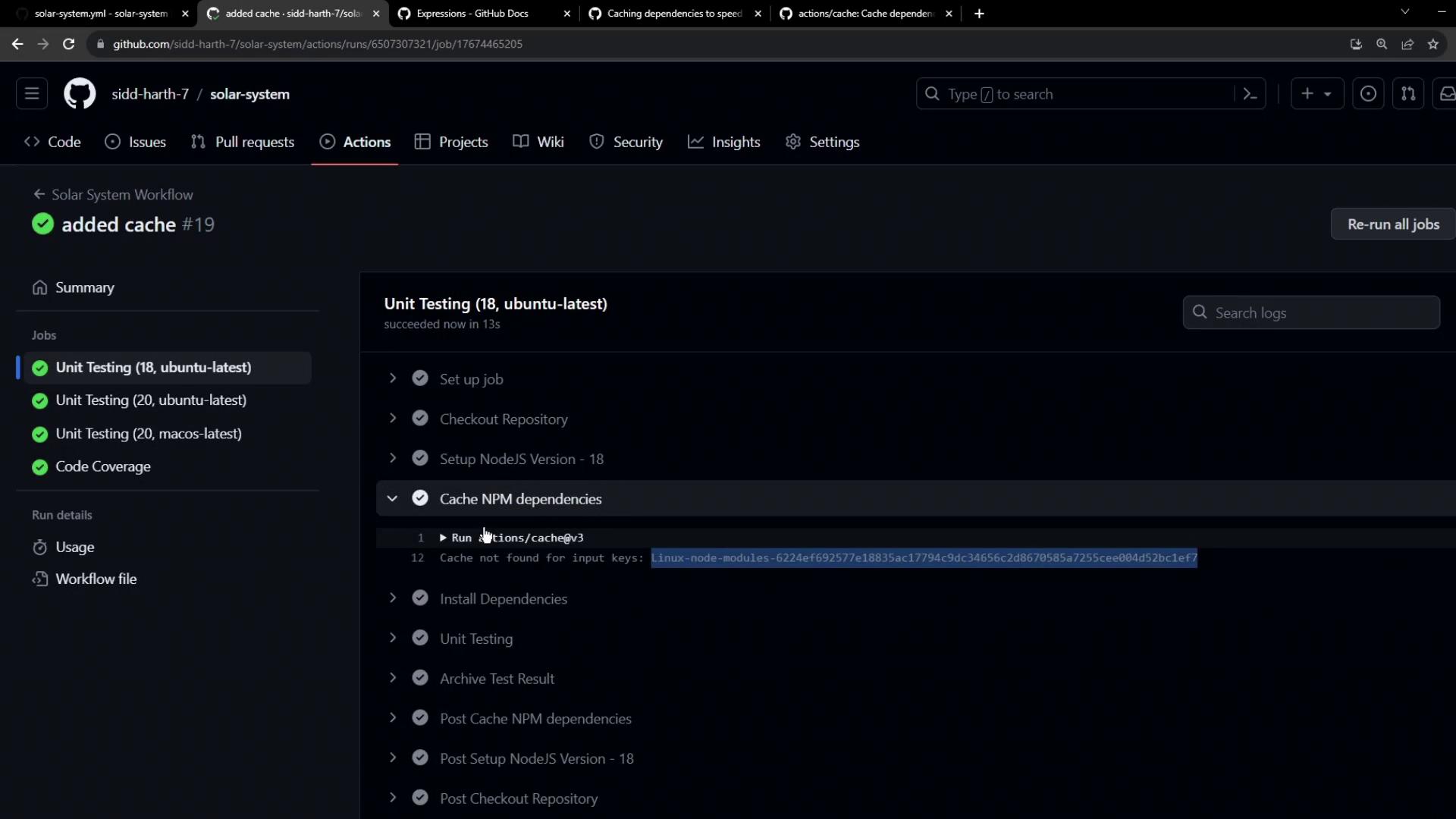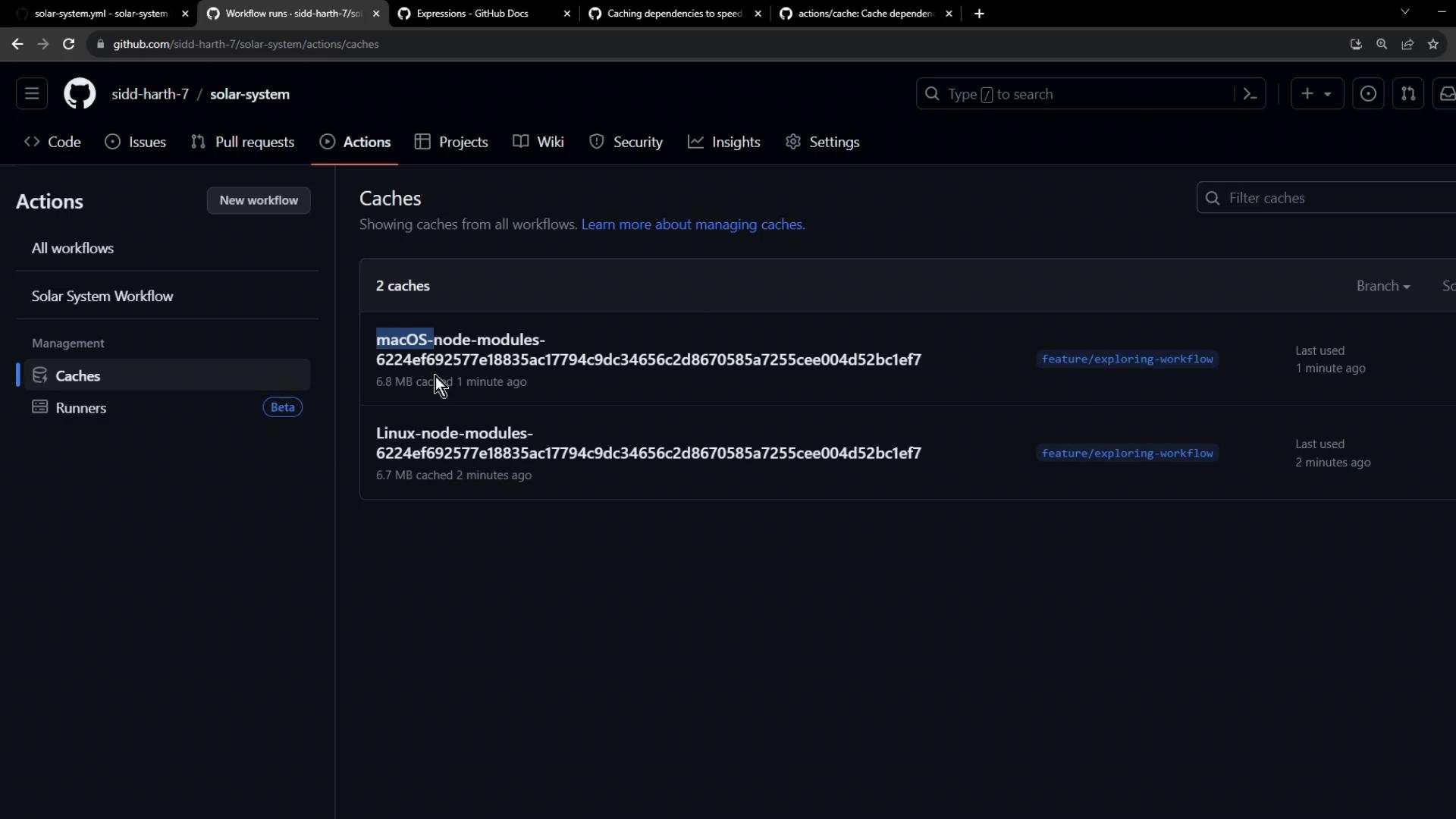GitHub Actions Certification
Continuous Integration with GitHub Actions
Cache Node Dependencies
In this lesson, we’ll explore how to speed up GitHub Actions workflows by caching Node.js dependencies across jobs. Caching reduces redundant installs, lowers CI time, and saves costs.
Why Cache Dependencies? Workflow Performance without Caching
Without caching, each job installs dependencies from scratch, adding significant overhead. For example, our previous workflow (~59 s total):
| Job | Duration |
|---|---|
| Code coverage | 21 s |
| Unit tests (Ubuntu) | 19 s |
| Unit tests (macOS) | 45 s |
| Unit tests (Windows) | 18 s |
| Total | 59 s |

Inspecting the macOS unit test job:
- Setup Node.js: ~20 s
- npm install: ~15 s
Especially in larger projects, fresh installs significantly inflate build times. Caching is the solution.
How Caching Works in GitHub Actions
GitHub Actions provides the actions/cache action to store and restore files between workflow runs.
- key: Unique cache identifier (often includes OS & file hash).
- path: Directories or files to cache.
The action checks for a cache hit; on miss, it runs normally and stores the cache for future runs.

Note
Use a strong cache key (e.g., ${{ runner.os }}-deps-${{ hashFiles('package-lock.json') }}) to invalidate the cache automatically when dependencies change.
Prerequisites and Inputs
Ensure you have:
- A lockfile (
package-lock.jsonoryarn.lock) at the repo root. actions/cache@v3available in your workflow.

A minimal cache example:
- name: Restore cache
id: cache-restore
uses: actions/cache@v3
with:
path: |
path/to/dependencies
some/other/dependencies
key: ${{ runner.os }}-my-deps-${{ hashFiles('lockfile.json') }}
- name: Save cache
uses: actions/cache@v3
with:
path: |
path/to/dependencies
some/other/dependencies
key: ${{ steps.cache-restore.outputs.cache-primary-key }}
Implementing Caching in Your Workflow
Add cache steps before npm install in both unit-testing and code-coverage jobs. We use ${{ runner.os }}-node-modules-${{ hashFiles('package-lock.json') }} as the key.
Unit Testing Job with Cache
jobs:
unit-testing:
name: Unit Testing
strategy:
matrix:
nodejs_version: [18, 20]
operating_system: [ubuntu-latest, macos-latest]
exclude:
- nodejs_version: 18
operating_system: macos-latest
runs-on: ${{ matrix.operating_system }}
steps:
- name: Checkout Repository
uses: actions/checkout@v4
- name: Setup Node.js ${{ matrix.nodejs_version }}
uses: actions/setup-node@v3
with:
node-version: ${{ matrix.nodejs_version }}
- name: Cache NPM dependencies
uses: actions/cache@v3
with:
path: node_modules
key: ${{ runner.os }}-node-modules-${{ hashFiles('package-lock.json') }}
- name: Install Dependencies
run: npm install
- name: Run Unit Tests
run: npm test
- name: Archive Test Results
if: always()
uses: actions/upload-artifact@v3
with:
name: mocha-test-results
path: test-results.xml
- path:
node_modulesdirectory. - key: Includes OS and lockfile hash for automatic invalidation.
Code Coverage Job with Cache
jobs:
code-coverage:
name: Code Coverage
runs-on: ubuntu-latest
steps:
- name: Checkout Repository
uses: actions/checkout@v4
- name: Setup Node.js 18
uses: actions/setup-node@v3
with:
node-version: 18
- name: Cache NPM dependencies
uses: actions/cache@v3
with:
path: node_modules
key: ${{ runner.os }}-node-modules-${{ hashFiles('package-lock.json') }}
- name: Install Dependencies
run: npm install
- name: Run Coverage
continue-on-error: true
run: npm run coverage
- name: Archive Coverage Report
uses: actions/upload-artifact@v3
with:
name: coverage-report
path: test-results.xml
Commit and push to trigger the workflow.
Verifying Cache Effectiveness
On the first run, cache miss:

After completion, caches appear in the repository settings:

On the second run, cache hit reduces npm install to ~1 s:
Cache restored successfully
Cache restored from key: Linux-node-modules-6224ef692577e18835ac17794c9dc34656c2d867685a7255cee004d52b1e7
$ npm install
up to date, audited 366 packages in 1s
Cache restored successfully
Cache restored from key: macOS-node-modules-6224ef69257718835ac17794g9dc34656785a7255cee00452bc1ef7
$ npm install
up to date, audited 366 packages in 1s
Next Steps: Invalidate Cache on Dependency Changes
To test cache invalidation, update your package.json dependencies and re-run the workflow. The hash changes, creating a fresh cache.
Warning
Avoid overly broad cache paths to prevent storing unwanted files. Restrict the path to necessary directories only.
Links and References
Watch Video
Watch video content